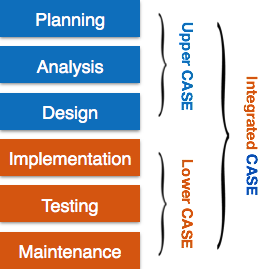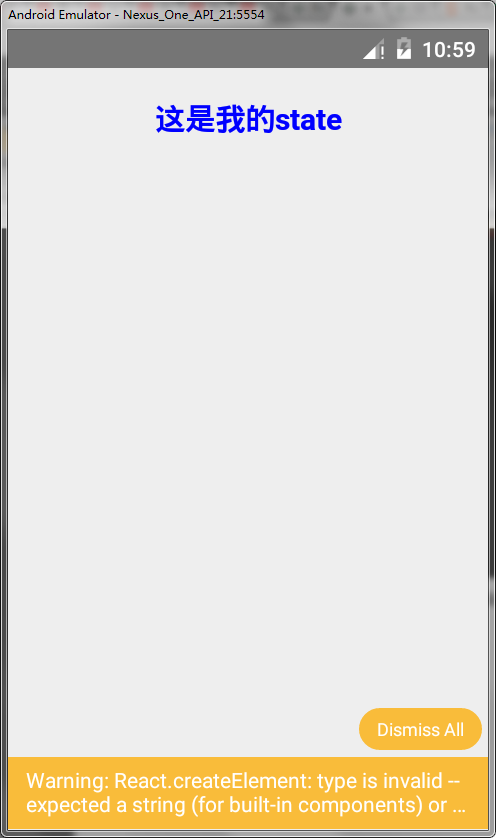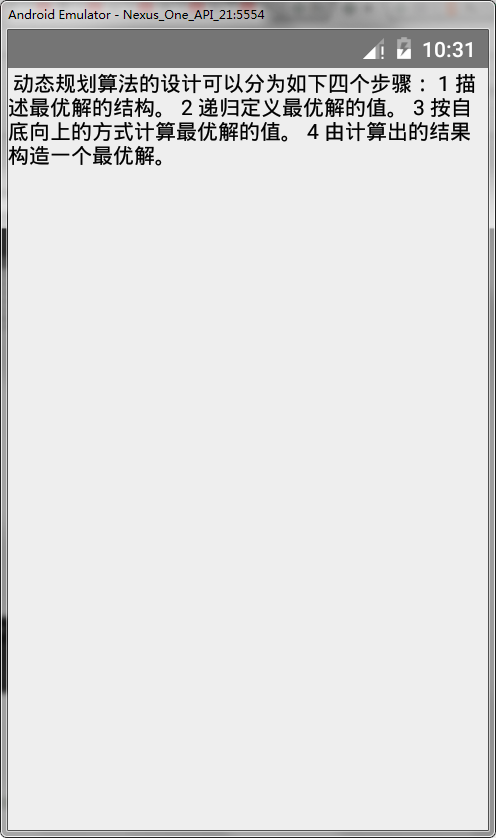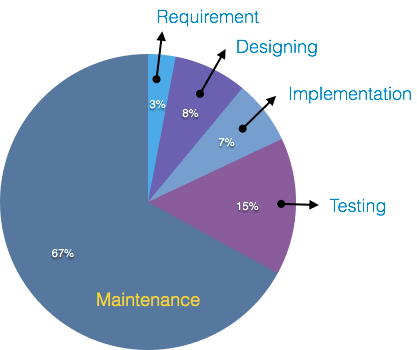本文概述
断言确定应用程序的状态是否与我们期望的相同。如果断言失败, 则测试用例失败并停止执行。
要在Web Driver中使用Assertion, 你需要下载Testng jar文件并将其添加到eclipse中。从下面给出的链接下载Testng jar文件:
https://mvnrepository.com/artifact/org.testng/testng/6.7
有两种类型的断言:
- 硬断言
- 软断言

硬断言
硬断言是在测试用例失败时引发AssertException的断言。在硬断言的情况下, 你可以使用java异常之类的catch块来处理错误。假设我们在一个套件中有两个测试用例。套件中的第一个测试用例具有失败的断言, 如果我们要在诉讼中运行第二个用例, 则需要处理断言错误。硬断言包含以下方法:
- 断言等于
- 断言不等于
- 断言真实
- 断言
- 断言为空
- AssertNotNull
AssertFalse()
断言验证条件返回的布尔值。如果布尔值是false, 则断言通过测试用例;如果布尔值是true, 则断言将通过异常中止测试用例。 AssertFalse()方法的语法如下:
Assert.AssertFalse(condition);让我们通过一个例子来理解:
- 条件为假时
package mypack;
import org.junit.Assert;
import org.openqa.selenium.By;
import org.openqa.selenium.WebDriver;
import org.openqa.selenium.chrome.ChromeDriver;
public class Checkbox_test {
public static void main(String[] args) {
// TODO Auto-generated method stub
System.setProperty("webdriver.chrome.driver", "C:\\\\work\\\\chromedriver.exe");
WebDriver driver = new ChromeDriver();
driver.navigate().to("https://www.spicejet.com/");
Assert.assertFalse(driver.findElement(By.cssSelector("input[id*='SeniorCitizenDiscount']")).isSelected());
System.out.println(driver.findElement(By.cssSelector("input[id*='SeniorCitizenDiscount']")).isSelected());
}
}在上面的代码中, Assert.assertFalse()包含返回假值的条件。因此, 它通过了测试用例。
在控制台上输出

- 当条件为真时
package mypack;
import org.junit.Assert;
import org.openqa.selenium.By;
import org.openqa.selenium.WebDriver;
import org.openqa.selenium.chrome.ChromeDriver;
public class Checkbox_test {
public static void main(String[] args)
{
// TODO Auto-generated method stub
System.setProperty("webdriver.chrome.driver", "C:\\\\work\\\\chromedriver.exe");
WebDriver driver = new ChromeDriver();
driver.navigate().to("https://www.spicejet.com/");
Assert.assertFalse(true);
System.out.println(driver.findElement(By.cssSelector("input[id*='SeniorCitizenDiscount']")).isSelected());
}}在上面的代码中, Assert.assertFalse()方法包含真实条件。因此, 断言失败, 这意味着测试用例也失败了。断言失败将异常停止执行。
在控制台上输出

AssertTrue()
断言验证条件返回的布尔值。如果布尔值是true, 则断言通过测试用例;如果布尔值是false, 则断言通过异常中止测试用例。 AssertTrue()方法的语法如下:
Assert.AssertTrue(condition);让我们通过一个例子来理解。
package mypack;
import org.junit.Assert;
import org.openqa.selenium.By;
import org.openqa.selenium.WebDriver;
import org.openqa.selenium.chrome.ChromeDriver;
public class Checkbox_test
{
public static void main(String[] args)
{
// TODO Auto-generated method stub
System.setProperty("webdriver.chrome.driver", "C:\\\\work\\\\chromedriver.exe");
WebDriver driver = new ChromeDriver();
driver.navigate().to("https://www.spicejet.com/");
driver.findElement(By.cssSelector("input[id*='SeniorCitizenDiscount']")).click();
Assert.assertTrue(driver.findElement(By.cssSelector("input[id*='SeniorCitizenDiscount']")).isSelected());
System.out.println(driver.findElement(By.cssSelector("input[id*='SeniorCitizenDiscount']")).isSelected());
}
}在上面的代码中, driver.findElement(By.cssSelector(” input [id * =’SeniorCitizenDiscount’]”)))。click();该语句用于选择”高级公民”框。在下一条语句中, 我们将应用断言来检查测试用例是否失败。 Assert.assertTrue()方法中的参数返回的是真值, 因此测试用例通过。
输出

在控制台上输出

AssertEquals()
AssertEquals()是一种用于比较实际结果和预期结果的方法。如果实际结果和预期结果都相同, 则断言毫无例外地通过, 并且测试用例被标记为”通过”。如果实际结果和预期结果都不相同, 则断言将失败并带有异常, 并且测试用例将标记为”失败”。下面给出AssertEquals()方法的语法:
Assert.assertEquals(actual, expected);让我们通过一个例子来理解。
- 成人人数为5岁时。
package mypack;
import org.junit.Assert;
import org.openqa.selenium.By;
import org.openqa.selenium.WebDriver;
import org.openqa.selenium.chrome.ChromeDriver;
public class Checkbox_test {
public static void main(String[] args)
{
// TODO Auto-generated method stub
System.setProperty("webdriver.chrome.driver", "C:\\\\work\\\\chromedriver.exe");
WebDriver driver = new ChromeDriver();
driver.navigate().to("https://www.spicejet.com/"); Assert.assertEquals("5Adult", driver.findElement(By.id("divpaxinfo")).getText());
System.out.println(driver.findElement(By.id("divpaxinfo")).getText());
}}

- 当成人人数不等于5

在控制台上输出

AssertNotEquals()
它与AssertNotEquals()方法的功能相反。 AssertNotEquals()是一种用于比较实际结果和预期结果的方法。如果实际结果与预期结果不同, 则断言毫无例外地通过, 并且测试用例被标记为”通过”。如果实际结果和预期结果都相同, 则断言失败, 并带有异常, 并且测试用例被标记为”失败”。下面给出了AssertNotEquals()方法的语法:
AssertNotEquals(actual, expected, message);让我们通过一个例子来理解。
- 当实际字符串不等于预期字符串时。
package mypack;
import org.junit.Assert;
public class Checkbox_test {
public static void main(String[] args) {
// TODO Auto-generated method stub
Assert.assertNotEquals("Hello", "How are you");
System.out.println("Hello...This is srcmini");
}
}在上面的代码中, 实际字符串(即Hello)与期望的字符串(即, 你好)不相等。因此, 该断言通过了测试用例。这将执行下一条语句, 下一条语句是System.out.println(” Hello … This is srcmini”);。
输出

- 当实际字符串等于预期字符串时。
package mypack;
import org.junit.Assert;
public class Checkbox_test {
public static void main(String[] args)
{
// TODO Auto-generated method stub
Assert.assertNotEquals("Hello", "Hello");
System.out.println("Hello...This is srcmini");
}}输出

AssertNull()
AssertNull()是一种验证对象是否为null的方法。如果对象为空, 则断言通过测试用例, 测试用例标记为”通过”;如果对象不为空, 则断言中止测试用例, 并将测试用例标记为”失败”。 AssertNull()方法的语法如下:
Assert.assertNull(object);让我们通过一个例子来理解。
- 当对象为null时。
package mypack;
import org.junit.Assert;
public class Checkbox_test {
public static void main(String[] args) {
Assert.assertNull(null);
System.out.println("Hello...This is srcmini");
}}输出

- 当对象不等于null时。
package mypack;
import org.junit.Assert;
public class Checkbox_test {
public static void main(String[] args) {
// TODO Auto-generated method stub
Assert.assertNull(10);
System.out.println("Hello World");
}
}输出

AssertNotNull()
AssertNotNull()是一种验证对象是否为null的方法。如果对象不为空, 则断言通过测试用例, 测试用例标记为”通过”;如果对象为空, 则断言中止测试用例, 并将测试用例标记为”失败”。 AssertNotNull()方法的语法如下:
Assert.assertNotNull(object);让我们通过一个例子来理解。
- 当对象不为null时。
package mypack;
import org.junit.Assert;
public class Checkbox_test
{
public static void main(String[] args) {
// TODO Auto-generated method stub
Assert.assertNotNull(10);
System.out.println("C Language");
}}输出

- 当对象为null时。
package mypack;
import org.junit.Assert;
public class Checkbox_test {
public static void main(String[] args) {
// TODO Auto-generated method stub
Assert.assertNotNull(null);
System.out.println("C Language");
}
}输出

软断言
到目前为止, 我们已经了解了使用Testng框架进行Web驱动程序中的硬断言。在硬断言中, 如果断言失败, 则中止测试用例, 否则继续执行。有时, 即使断言失败, 我们也希望执行整个脚本。在硬断言中这是不可能的。为了克服这个问题, 我们需要在testng中使用一个软断言。








